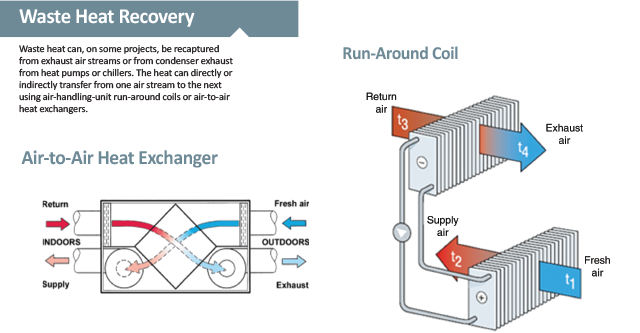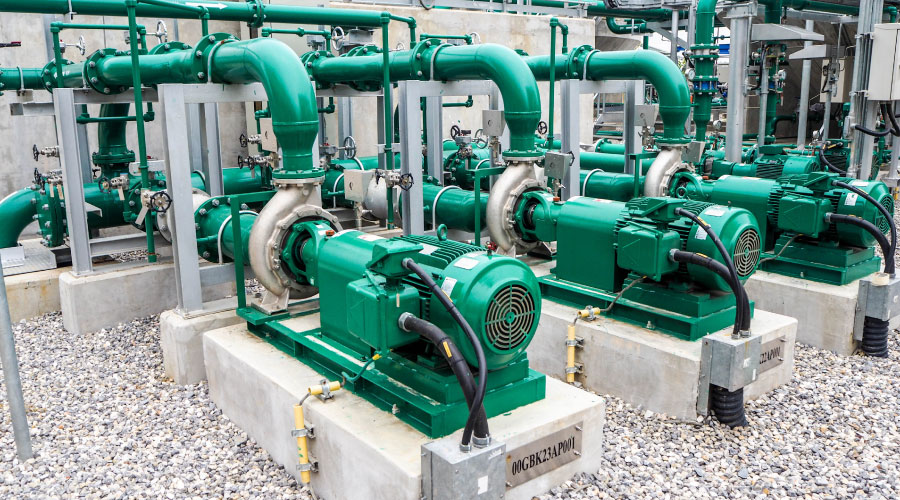Net-Zero Energy Buildings: Waste Heat Recovery And Renewable Energy
Waste heat recovery and renewable energy are important strategies in net-zero energy buildings.
Because natural gas systems are less often used in net-zero buildings, there are fewer opportunities to recover energy from the heat-intensive processes. If natural gas is not used for heating, a project is unlikely to use fuel cells or micro-turbines, eliminating the ability to recover waste heat from those energy-generating systems.
On many projects, waste heat sources occur within the exhaust air streams or in condenser exhaust from heat pumps or chillers. Depending on the use of the incoming air and the quality of the outgoing air, heat can be transferred using air-to-air heat exchangers, air-handling-unit run-around coils, and thermal energy wheels. These systems either directly or indirectly transfer heat from one air stream to the next.
Another source of waste heat is the exhaust air from heat pumps or condenser water from chillers. If there is a simultaneous demand for heating (possibly in domestic hot water), this waste energy can be reused as a heat source.
Renewable Energy and Building Automation
The steps outlined are important in another way for projects aiming to achieve net-zero energy use. Those projects decide which renewable power generation system (photovoltaic cells, building-integrated wind turbines, bio-fuel, or some other means) best matches the building demand and profile for the project type and region. Measures that reduce demand also help to reduce first cost of the generation system, and make it easier to deal with the source's intermittent power production. The protocol we've outlined makes it easier to size energy-generating systems at an appropriate and affordable capacity.
Building occupants also play an integral role in efforts to achieve energy efficiency, especially in net-zero buildings. If the user is unaware of the energy consumption in relation to the building energy generation, there is little chance of achieving a neutral energy balance (i.e., net-zero energy use) at the end of the measurement period. Building dashboards allow the user to monitor building energy consumption and to better understand when manual systems should be operated. For instance, the building dashboard may notify the user when outdoor air temperatures are acceptable for opening a window or inform the user when energy conservation may be needed on a cloudy day.
The design of a highly efficient HVAC system, especially for a net-zero project, is a complicated puzzle that requires all members of a project team to engage in the process. More than ever, there is reliance on all members to cooperate, motivate, and inspire their counterparts to achieve the common goal of energy neutrality. The reward is a net-zero building that can meet the needs of the present while having "zero" impact on the ability of future generations to meet their own needs.
Bruce McKinlay, PE, LEED AP, is a principal with Arup in Los Angeles and leads the firm's commercial property market in the Americas. He has collaborated on numerous sustainable projects where an integrated design approach has led to greater energy efficiency. He can be reached at bruce.mckinlay@arup.com.
Jamey Lyzun, PE, LEED AP, is an associate at Arup and has 14 years of experience on projects. He has applied many of the techniques outlined in this article to assure that integrated strategies at the design phase can lead to low energy and sustainable outcomes during operation. He can be reached at Jamey.lyzun@arup.com.

Related Topics:














